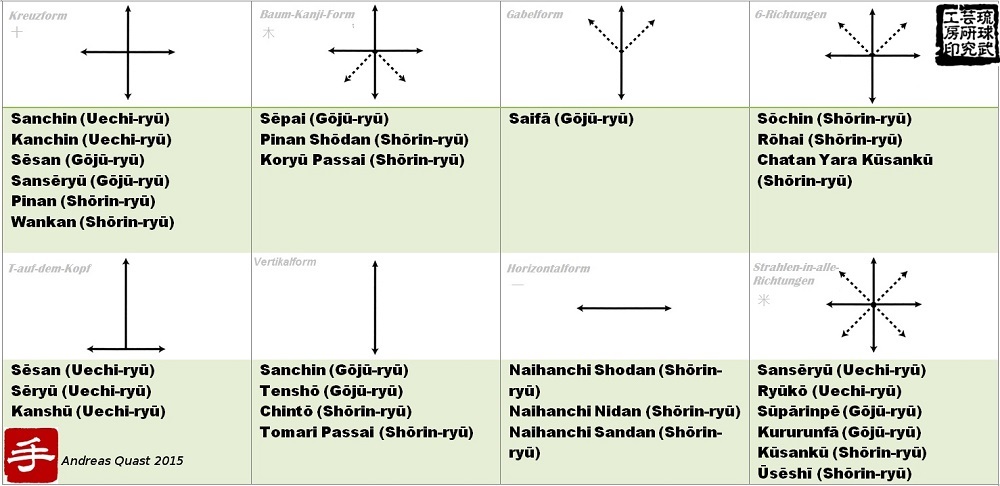At the nucleus of the Kata of Karate there are Uke-waza (defenses), Tsuki-waza (strikes), and Keri-waza (kicks). However, Kata also inherently include Tsukame-waza (seizing), Nage-waza (throwing) and Kansetsu-waza (joint locking, grappling) etc. Every Kata has a so-called Enbusen, or demonstration diagram.
Individual techniques (points) are combined to series (lines), which represent the paths within the Kata. Taken together, they describe the whole course taken during the performance of the Kata. This is the demonstration diagram (Enbusen).
Forms of Enbusen might be cross shaped , vertical or I-shaped, horizontal, all sides radiation (rice-Kanji form), T-shaped, reverse-T-shaped, tree-Kanji-shaped and others.
In addition to the aesthetic sense of the inventor, the Enbusen depends on the kind of training place, the martial arts tradition, as well as the starting point and end point of the performance, which is called “matomari” (finish). It is said that starting point and end point have to be the same spot, that is, Kata are thought to have been designed so as to return to the original starting spot. However, by differences in the physique, power of expression, way of stepping, footwork of the performer, and others, the end point and starting point might not always exactly be the same. Moreover, there are Kata where the starting and end points are definitely not the same.
The fact that the Kata are designed with lines and turns so as to end approximately at the starting point might have come from a limited practice area, or from practical reasons of application, and other reasons. It might also be seen as a hint to it having been a performing art used on stage. I am sure you can find many reasons as to why Kata are designed to start and finish around the same starting and ending spot.

A selection of Enbusen or demonstration diagrams.
© 2015, Andreas Quast. All rights reserved.
